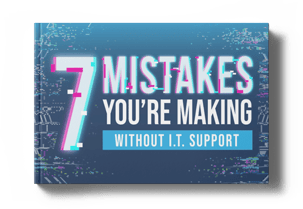Think Only Big-Name Corporations Suffer Data Breaches? Think Again.
The news is full of stories about companies like Anthem, Chick-fil-A, Sony, and JP Morgan Chase losing valuable data in a cybercrime attack. It’s...
2 min read
Lance Stone : Mar 10, 2020 12:44:39 PM
It can be easy to assume that the Department of Health and Human Services Office for Civil Rights (OCR) is only really concerned with the “big fish” in HIPAA compliance. Investigations can take years, so why would they worry about smaller healthcare organizations like yours and your potentially minor data breach, when they can focus on major ones?
Case in point - America's second-largest health insurer, Anthem, was hit with a record-breaking $16 million fine for exposing the medical data of more than 79 million Americans. With cases like that to consider, why would the OCR care about you?
Unfortunately, this thinking isn’t exactly realistic…

The OCR is just as willing to investigate your minor data breach as they are major ones like Anthem’s. Frensenius Medical Center was handed a $3.5 million fine after five data breaches, each of which affected fewer than 300 patients.
Similarly, you can’t assume that you’re safe from cybercriminals either. Smaller organizations in the healthcare community aren’t flying under the radar. You’re in just as much danger as larger medical practices, or perhaps, even more so, if you don’t have the right cybersecurity measures in place.
For example, a Wyoming community health system, with no more than 90-beds, was hit by ransomware late last year. In the aftermath, they had to cancel appointments and suspend services, severely affecting their patients, and their ability to operate.
Nearly half of all reported data breaches in 2019 affected small businesses, mainly because they're incredibly easy targets. The fact is that most cybercriminals aren't spending all that much time or effort in any attack - they're just sending phishing emails, setting up malware traps, and other largely passive and automated tactics.
That’s why you need to understand your level of risk of a data breach and a HIPAA fine…
If you want to avoid the same noncompliance fines as Frensenius, make sure your HIPAA risk assessment includes:
Need a hand assessing your HIPAA compliance? Don’t worry, it’s OK to ask for help from when the stakes are this big. You can partner with On Time Tech to have your compliance practices double-checked and supported by the right technology.
Like this article? Check out the following blogs to learn more:
2020 Outlook: Why Are Countries Such as China Sponsoring Cyberterrorism Against Their Enemies?
The Cybersecurity Threats from China No One is Talking About


The news is full of stories about companies like Anthem, Chick-fil-A, Sony, and JP Morgan Chase losing valuable data in a cybercrime attack. It’s...
Cloud-based technology has been around for nearly two decades, and virtually all businesses (97 percent according to one recent survey) are using...

Have you heard about Heartbleed?

On Time Tech is an IT Support and Computer Services company serving California. We provide services to the areas in and around We know businesses like yours need technology support in order to run highly-effective organizations. Leverage pro-growth technology services for your company now.
San Francisco:
182 Howard St.
Suite 108
San Francisco, CA 94105
Los Angeles:
8350 Rex Road
Pico Rivera, CA 90660
Business Hours:
M-F: 8AM-9PM
© 2024 On Time Tech